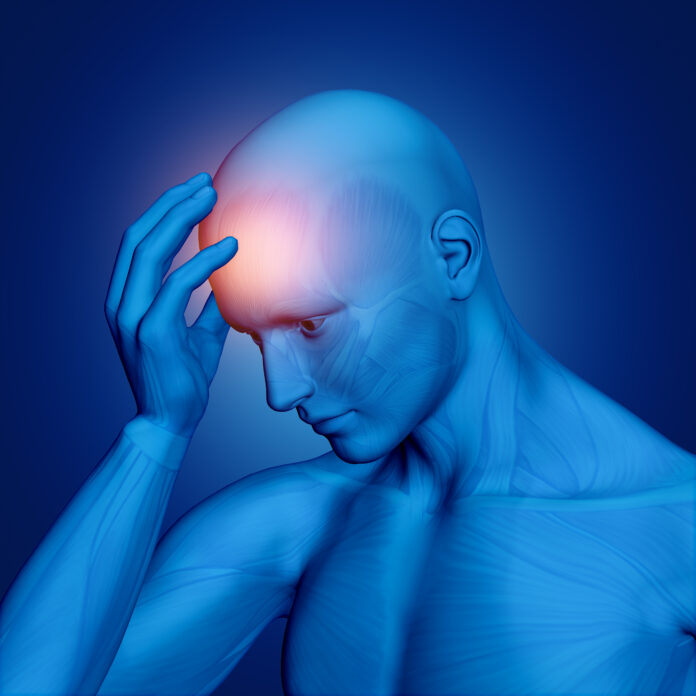A range of neurological disorders affect our lives in this highly advanced era of science and technology. The term dementia also belongs to a category of neurological condition that affects your brain and gets worse over time. Many types of dementia are being studied by the researchers but the most common types of dementia are being discussed in this article.
Dementia is a range of neurological conditions that involve changes in your memory, behavior, personality, and thinking. Its symptoms are not the same for every individual. They vary depending on the type of person affected by this condition. Dementia has different types and trying to understand all these forms of dementia encourages you to get the right support to help the people who live with this condition.
The most common forms of dementia about which you need to know comprehensively are Alzheimer’s disease, frontotemporal dementia, and vascular dementia as the neurological experts use the term “dementia” to mention a vast range of changes in the brain that cause memory loss. Such changes in the thinking or behavior of a person make it difficult for them to perform daily activities of life properly. Most people also lose their actual personality and thinking due to attacks of dementia. Dementia, whatever the type, affects the most important areas of your brain, including the areas that control your memory, decision-making, and language. Dementia causes severe loss to your cognitive capabilities which are irreversible in most cases. However, if your dementia has come to you due to depression or the use of drugs and; alcohol it can have different effects on your brain. Progression of dementia is different in different individuals and the ways of progression depend on the type of dementia it causes. Dementia can be categorized into different stages. In this article;e we will discuss important types of dementia along with their causes, symptoms, and ways of management.
Types of Dementia
The most common type of dementia is known as Alzheimer’s disease but other types are also hazardous. You may have multiple types of dementia at the same time due to various types of causes or triggers. According to an estimate around one million people in the country are facing difficulties due to attacks of dementia and around two individuals are becoming its victims every five minutes. Recovery is possible but needs support and proper care because the condition reappears again and again.
Alzheimer’s Disease This is a notorious and the most common form of dementia among older adults in the world. Most cases of dementia belong to Alzheimer’s disease.
This is a notorious and the most common form of dementia among older adults in the world. Most cases of dementia belong to Alzheimer’s disease.
Its symptoms include:
- Changes in personality and mood.
- You are forgetting recent events and the names of other individuals.
- Disorientation or lack of concentration.
- Overlooking personal care.
Depression is the first indicator of Alzheimer’s disease but is not a disease itself. Depression needs proper treatment as a separate condition. Healthcare professionals and psychiatrists usually get confused and misdiagnose depressed individuals as Alzheimer’s patients.
Alzheimer’s disease is not a type of depression, it has depression as a strong symptom. This condition causes the death of your brain cells. With time the disease progresses and the symptoms get more severe. You may experience mood changes and confusion with the disease progression. You may also have difficulty in walking and speaking. People usually develop the symptoms of Alzheimer’s disease in their 40s to 50s but the ratio of the condition increases day by day. Alzheimer’s disease progresses in seven stages, according to the experts of the neurology department of the United Kingdom. However, Alzheimer’s can be diagnosed at its 4th stage. The early stages have no prominent symptoms so their recognition is difficult. Your brain areas get worse gradually until the seventh stage arrives and at this stage, you may likely experience severe signs and symptoms in movement and speech that are observed by the people around you.
Risk Factors for Alzheimer’s Disease
This condition can arise due to different triggers that often work together to worsen the symptoms. However, the causes are not fully understood. Most studies risk factors for the condition are:
- Genetics.
- Older age.
- Family history.
Frontotemporal Dementia
FTD, frontotemporal dementia is a state of dementia where several types of dementia affect only the front and sides parts of your brain. These are specialized for controlling your behavior and language. Neurological experts, usually, refer to FTD as Pick’s disease but that is just a simple type of FTD.
FTD is more common in people aged 50 to 70 years. Scientists are still trying to find out the actual cause of FTD. Recent studies suggested that several gene mutations can be the cause of the condition because such gene mutations are found in patients with the disease.
Frontotemporal dementia has a major symptom of loss of motivation and inhibition with an increase in compulsive behavior. Problems related to speech, and forgetting the common events and names of your near ones are also its major symptoms. Experts have claimed that FTD is more dangerous than Alzheimer’s disease as it has more severe impacts on your walking and speech than Alzheimer’s disease.
Memory loss is not prominent at the early stage of FTD but it appears as the disease progresses. FTD affects individuals more severely, who are already suffering from Amyotrophic Lateral Sclerosis.
Vascular Dementia
Another most common type of dementia is vascular dementia. Its main cause is the lack of blood supply to your brain or a blockage in the blood flow in the brain’s blood vessels. This condition occurs in people with older age. This condition has a close link with atherosclerosis disease that may lead to more severe diseases such as strokes, high blood pressure, and diabetes. Most of the patients experience strokes before the attack of vascular dementia.
Its symptoms don’t appear at once but they occur slowly. Its common symptoms are confusion, lack of concentration, and disorientation. In the later stages, the symptoms get worse and it becomes difficult for the affected individual to complete tasks of the day or to maintain focus for a longer period. Vascular dementia is diagnosed more accurately due to its symptoms of hallucinations and problems in vision. Unlike Alzheimer’s Disease, vascular dementia doesn’t show a progressive decline, it tends to appear in a phase-wise pattern and discrete events are a major cause of developing vascular dementia.
Risk Factors for Vascular Dementia
Numerous risk factors are involved in the development and progression of vascular dementia. Some are :
- High blood pressure.
- Heart attack in family history.
- High levels of cholesterol.
- Diabetes.
- Atypical heart rhythm.
- Older age.
- Strokes.
- Lupus.
Parkinson’s Disease Dementia
Parkinson’s Foundation has claimed in a recent survey report that 80% of people with Parkinson’s disease have a 100% chance of developing dementia shortly. However, other research sources do not agree with the percentage and they claim that the percentage is lower than 80 percent.
Problems with reasoning and judgment are the early signs of this condition. You can understand the condition of a patient living with Parkinson’s disease with this example that he might have difficulty understanding visual information and memorizing how to perform daily tasks. Such patients often experience deadly or confusing hallucinations.
This condition makes the affected person more irritable and depressed. As the disease progresses it can make you paranoid and cause difficulties in your speech. You may lose your memory, even start forgetting words, or get lost during a conversation. Parkinson’s disease can be easily diagnosed due to its unique risk factors of postural instability or imbalanced gait. PDD is a horrible condition when you experience difficulty in balancing your body, initiating movement, or going through more falls a day.
Mixed Dementia
A neurological condition found with more than one type of dementia is known as mixed dementia. This is a common condition and mostly comes with a combination with Alzheimer’s disease. A 2020 study shows that 25 of dementia patients experience both conditions. However recent studies claim a higher percentage. Mixed dementia has different symptoms depending on the toe of the affected individual. The most common symptoms identified for mixed dementia are memory loss and disorientation. While some people also experience mood and behavior changes. Some patients complain of difficulty in walking and speaking as the disease progresses.
Dementia with Lewy Bodies
Dementia with Lewy bodies refers to dementia caused due to protein deposits in nerve cells. The protein clots in brain cells interrupt message transferring from one neuron to the other which leads to memory loss and disorientation. People often refer to this condition as DLB but neurological experts say that this is another type of LBD and different from Parkinson’s disease. If you have such a condition you may:
- Have bad sleep quality and difficulty in falling asleep.
- Feeling sleepy during the day.
- Experience visual hallucinations.
- Become lost or disoriented unexpectedly during your daily tasks.
This condition has many similar symptoms with Alzheimer’s disease and Parkinson’s disease. But its unique symptoms include trembling hands, difficulty in walking, feeling weak and dizzy throughout the day. People who suffer from Alzheimer’s disease or Parkinson’s disease are more likely to have Lewy bodies in their brains.
Risk Factors for Lewy Body Dementia
Common risk factors for this disease include:
- Having hallucinations earlier.
- Male gender.
- Instability in walking.
- No response to medications.
- Feeling symptoms on the left and right sides of the body.
- Imbalance postures.
- Difficulty in movement.
Normal Pressure Hydrocephalus
This condition is recognized as building up excess fluid in your brain’s ventricles. Normal pressure hydrocephalus accounts for 10% of all types of dementia. The brain has several fluid-filled spaces that are responsible for providing cushion to the brain and the spinal cord in case of any shock or head or back injury. The right amount of fluid makes it possible to work properly but the excessive production of fluid puts extra pressure on brain cells. This damage to the brain causes dementia.
Its diagnosis is a time-consuming and difficult process because many tests are carried out to confirm the fullness of brain ventricles with excessive fluid. According to recent research, less than 15% of people get an accurate diagnosis and others are categorized with Alzheimer’s disease due to similarity in the symptoms.
In time contact with your neurological healthcare professional can save you from a big loss and the doctor can easily detect the actual cause of brain damage. Most cases of these conditions require surgery for treatment.
Risk Factors for Normal Pressure Hydrocephalus The potential causes of the condition include:
The potential causes of the condition include:
- Brain tumor.
- Injury to the brain or spinal cord.
- Previous brain or spinal cord surgery.
- Infection in nerve cells.
- Bleeding through the brain.
Tips for Living with Dementia Symptoms
- Avoid having slippery surfaces, trailing wires, or loose rugs in your home because you can trip over them. Avoid using electric heaters, which can be dangerous if left on. Removing such hazardous hurdles helps you live independently as long as possible.
- Take regular medications as prescribed by the doctor or therapist. Keep regular checks on your hearing or seeing because dementia attacks them first.
- Patients’ loved ones can be helpful to them if they record all information about the individual who is experiencing dementia symptoms, including personal details, information about the people in their life, their likes or dislikes, and so on. This step can help the patients of dementia to have a look at their past. And their healthcare provider can get better knowledge about them that will help them in treatment.
- Encourage yourself as a dementia patient to enjoy life activities such as music, gardening workouts, etc.
- Incorporate healthy lifestyle changes including a balanced diet because eating healthy and being physically active can boost your well-being and improve the symptoms of dementia.
- Avoid driving because dementia affects your power of decision and vision.
- Try to develop good hygiene for having a good quality sleep. Keep your bedroom dark, cool, and comfortable so that you can sleep well.
- Avoid caffeinated drinks near bedtime.
Conclusion
A large number of diseases are reported that can cause dementia. From all of those, Alzheimer’s disease is the major form that is affecting a great percentage of people with its horrible symptoms.
There are possibilities to have multiple types of dementia at the same time because dementia can develop in many ways. The condition is called mixed dementia and is becoming more common day by day.
Treatments for dementia symptoms are possible but the procedure is slow and time-consuming. So don’t waste your time and talk to your healthcare provider promptly if you are experiencing any of the discussed symptoms.







